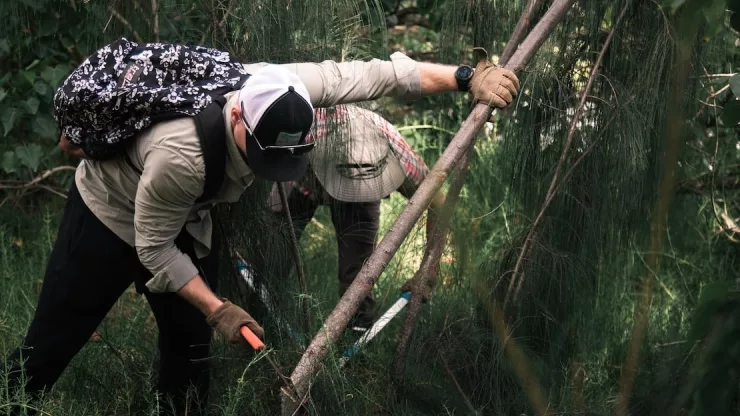Invasive species are one of the greatest threats to the health of urban ecosystems around the world.
These non-native plants, animals, and microorganisms compete with native species for resources and can cause significant damage to the environment, economy, and human health.
However, the good news is that innovative strategies are emerging to tackle these invasive species in urban areas.
This article will explore some of the latest approaches to managing invasive species in urban ecosystems.
We will look at how science is driving new solutions, and how these solutions are being put into action in cities around the world.
By understanding the latest developments in this field, we can be inspired to take action ourselves and help to protect the health and biodiversity of our urban environments.
Jump to Section
Tackling Invasive Species: A New Approach for Urban Ecosystems
In the past, the most common approach to dealing with invasive species in urban areas was simply to remove them.
This involved cutting or pulling out the invasive species by hand, using herbicides to kill them, or introducing natural predators to control their populations.
While these methods can be effective in the short term, they are often expensive, time-consuming, and can have unintended consequences.
Today, a new approach is emerging that focuses on building resilience in urban ecosystems.
This approach recognizes that urban environments are constantly changing, and that invasive species are just one of many stressors that can impact these ecosystems.
Instead of simply removing invasive species, this approach seeks to create conditions that are less hospitable to them, while promoting the growth and diversity of native species.
One way to do this is through what is known as ecological restoration.
This involves restoring degraded or damaged ecosystems by reintroducing native plant and animal species, and creating conditions that support their growth and reproduction.
By restoring the natural balance of an ecosystem, it becomes less vulnerable to invasive species and other stressors.
From Science to Action: Innovative Strategies for Restoring Our Cities
The new approach to managing invasive species in urban ecosystems is being driven by advances in science and technology.
Researchers are using new tools, such as remote sensing and machine learning, to better understand the complex interactions between invasive and native species, and to predict how ecosystems will respond to different management strategies.
One innovative strategy that is being explored is the use of “biocontrol agents” to manage invasive species.
Biocontrol agents are natural enemies of invasive species, such as insects or fungi, that can be introduced into an ecosystem to reduce the population of the invasive species.
Unlike pesticides, biocontrol agents are specific to a particular invasive species and do not harm native species.
Another strategy that is gaining popularity is the use of “green infrastructure” to manage invasive species in urban areas.
Green infrastructure refers to the use of natural or semi-natural systems, such as parks, wetlands, and green roofs, to manage water, reduce pollution, and provide habitat for native species.
By creating more green space in urban areas, we can create conditions that are more hospitable to native species and less hospitable to invasive species.
These innovative strategies are already being put into action in cities around the world.
In Melbourne, Australia, for example, the city is using biocontrol agents to manage invasive species in its parks and green spaces.
In New York City, the city is using green infrastructure to manage stormwater runoff and create new habitats for native species.
Invasive species are a major threat to the health and biodiversity of urban ecosystems, but with innovative strategies and new approaches, we can manage them more effectively.
By building resilience in our urban environments, and promoting the growth and diversity of native species, we can create healthier, more sustainable cities.
The new tools and technologies being developed by researchers are helping us to better understand the complex interactions between invasive and native species, and to predict how different management strategies will impact our urban ecosystems.
By working together, we can overcome the challenges posed by invasive species and create a brighter future for our cities and our planet.
I’m a nature enthusiast and creator of Metro Wilds and have spent years exploring the great outdoors.
With a passion for environmental conservation and sustainability, I have dedicated my career to writing about the beauty and wonders of nature, as well as the threats facing our planet.
Contact me at [email protected] for assistance.





